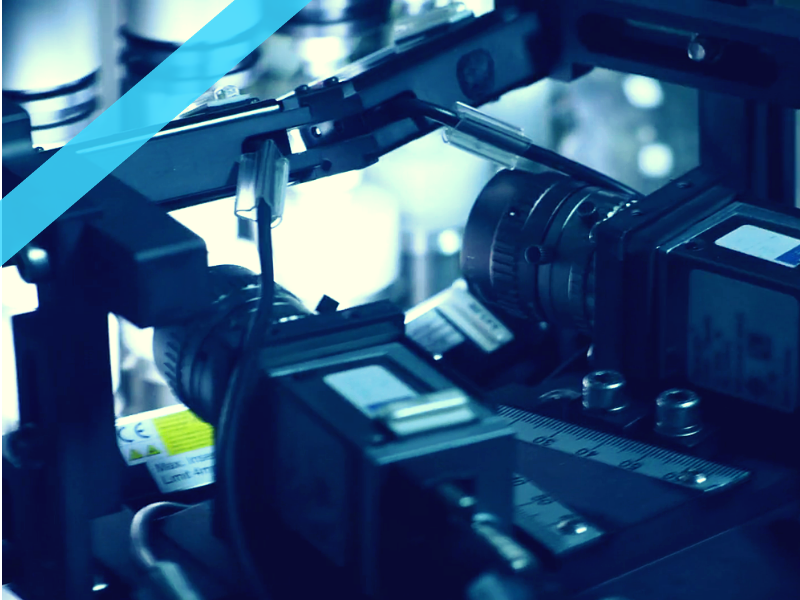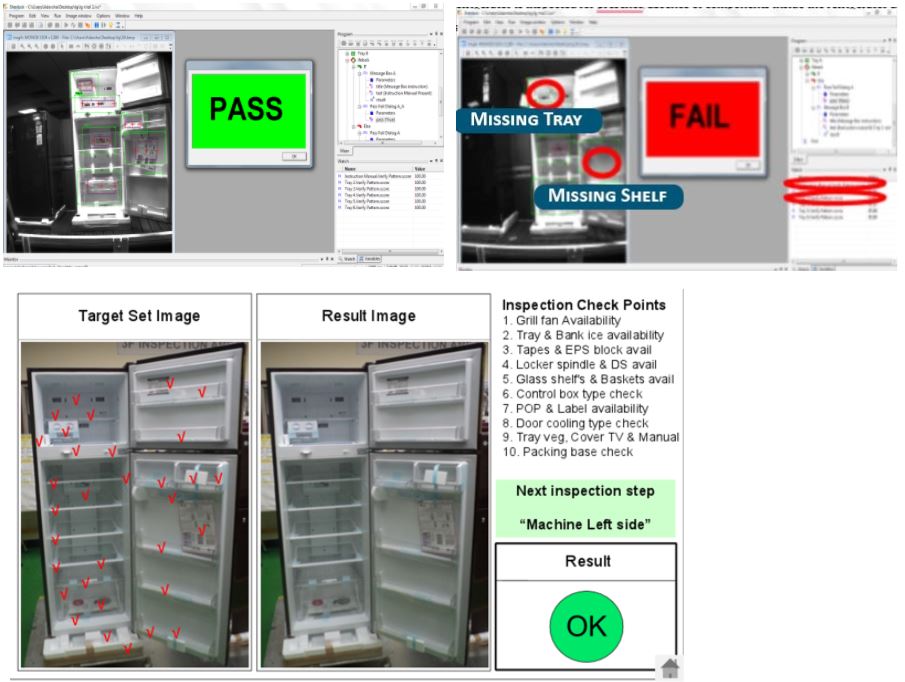
OVERVIEW
The client is a multinational company established in the decade of 1950s. Their motto is enhancing the experience of their customers. In the year 2020, the massive revenue produced was above 56 billion US dollars.
Watch Video – https://www.youtube.com/watch?v=wy3gGoQpVrg
Requirement – To automate the verification of the presence of all the internal parts (shelves/trays/fans, etc) on the manufactured refrigerators.
Why is verification important?
The solution involves inspecting 32 parts in 10 different checkpoints with 100 percent accuracy. Missing parts in assemblies caused an increase in the cost of reparation, return, and recall.
What’s not working with the current process?
The current way of inspecting assemblies is manual. A large number of refrigerators with 32 locations to be inspected every single refrigerator make it more difficult to achieve 100 percent inspection accuracy.
APPROACH
How Qualitas Technologies Solved The Problem?
Qualitas developed a vision system powered by AI to detect all 32 objects. Let’s understand in detail:
The solution development journey was divided into 4 methodologies which are Install, Inspect, Instruct and Improve.
- INSTALL – An area scan camera with fixed 3 square white lights is mounted to inspect the internal area of the refrigerator for the presence/absence of parts. This part is for image acquisition of the refrigerator assemblies to train the AI model for the presence and absence of the parts.
The distance between the camera and the piston (i.e. working distance) was set to be 1500 mm to capture the FOV (Field Of View 60×1200 msg.). The setup was constructed keeping in mind that the images had to be clear in order to train the vision system.
- INSTRUCT – A set of the images was trained in the Qualitas EagleEye® cloud through annotation. Using a simple point and click interface, a bounding box is created around the trays, shelves, and other internal parts and named accordingly. This is how a trained model of these objects is created in very little time.
- INSPECT – The trained model is updated to the live production line where the vision system is able to detect all the parts in real-time and displays the result on a human-machine interface screen. These results were communicated via PLC to take corresponding actions in real-time.
- IMPROVE – An ideal scenario would have some of the objects (trays and shelves) that may vary in features from what is pre-trained. These variations are introduced to the AI software and trained similarly. Here improvement was required. A series of trained models are created through multiple images over time until the vision system is able to identify all variations and the desired accuracy is met.
CONCLUSION
With the deployed machine vision system, the following improvements were observed –
1. The accuracy of verifying the internal parts is more than 99 percent.
2. Making the process error-free and fast. The average inspection time was reduced from 12 seconds to 1 second.
3. Reduced the product returns and recall rates by 50 percent.



